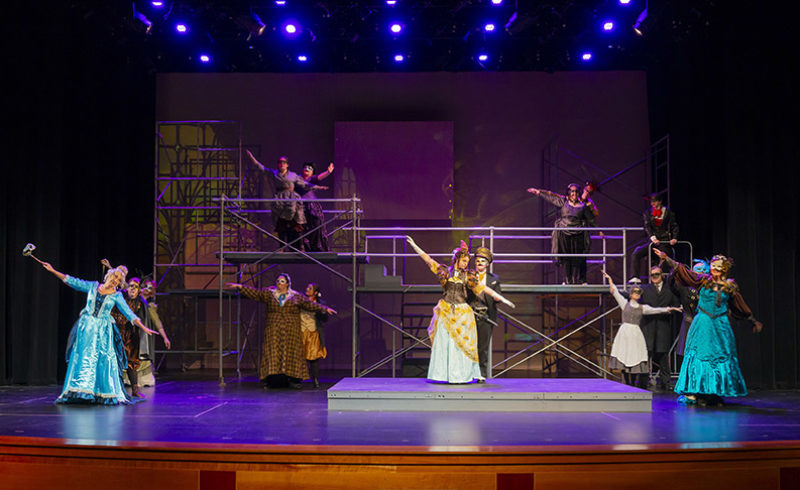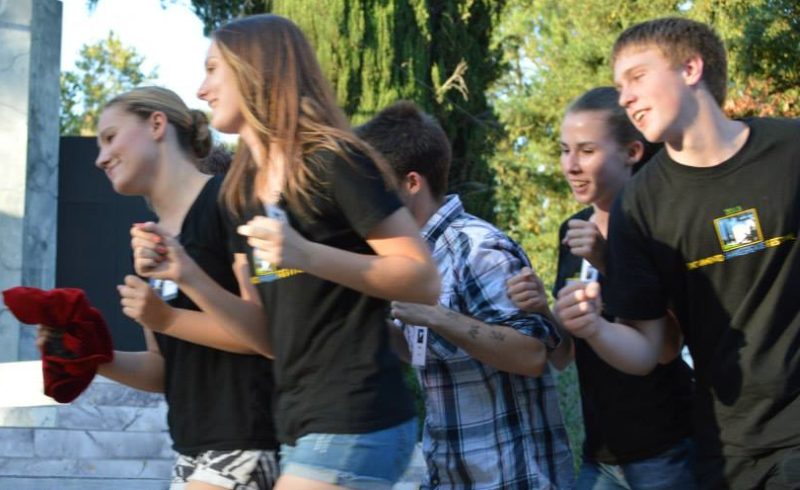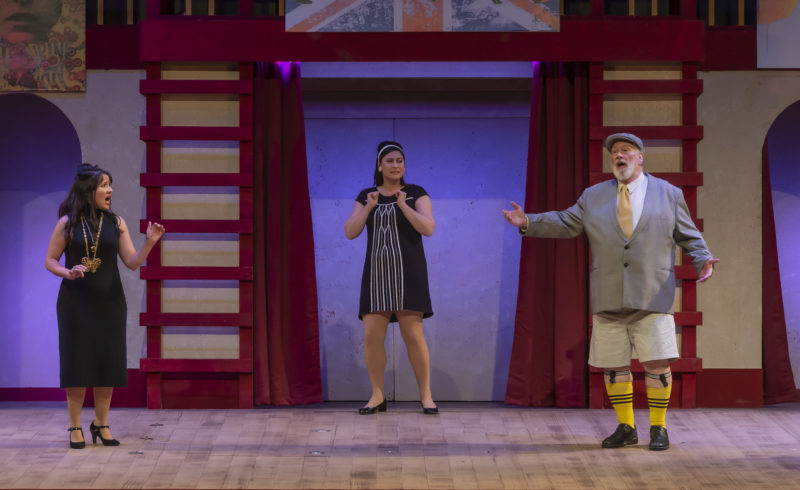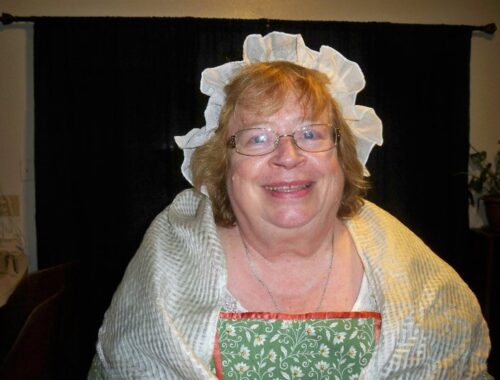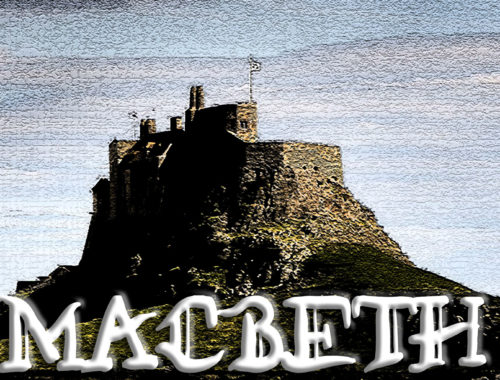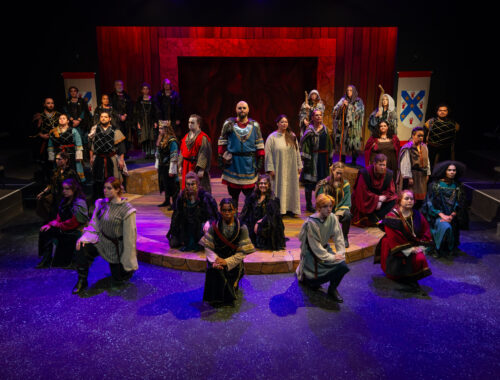Julius Caesar 1922 Opens July 5
“Friends, Romans, Countrymen, lend me your ears.” ~ Marc Antony
Jealous conspirators convince Caesar’s friend Brutus to join their assassination plot against Caesar. To stop Caesar from gaining too much power, Brutus and the conspirators kill Caesar on the Ides of March. Mark Antony drives Brutus and the conspirators out of Rome, and there is war. Still Shakespeare’s original text, but set in 1922 Italy, as the rise of fascism propelled Italy toward World War II. A cautionary tale?
Sacramento Shakespeare Festival presents Julius Caesar by William Shakespeare, from July 5 through July 28. Julius Caesar opens Friday, July 5 at 7:30 pm, followed by a sparkling dessert reception in the Chris Daubert Courtyard for the Arts (all are welcome). Performances continue on July 6, 12, 13, 18, 19, 20, 25, 26, 27 at 7:30 pm, and July 7, 14, 21, and 28 at 2:00 pm. All performances will be held in the Art Court Theatre in the Performing Arts Center on the campus of Sacramento City College at 3835 Freeport Blvd. Ticket prices for Julius Caesar are $20 General Admission; $15 for Seniors, Veterans/Military Personnel, and Persons with Disabilities, and $10 for Students. Tickets may be purchased online, or in-person one hour before the performance begins. All details and tickets are available online at www.sacramentoshakespeare.net.

Phoenix Brewer as Caius Cassius, Matthew Malone as Octavius Caesar, Juliuanna Schultz as Calpurnia, Sarah Palmero as Julius Caesar, & Matthew Fairall as Marcus Brutus. Photo by Bruce Clarke. 
Matthew Malone as Octavius Caesar, Sarah Palmero as Julius Caesar & Julianna Schultz as Calpurnia. Photo by Bruce Clarke. Auditions – Julius Caesar 1922
Auditions for our summer festival 2024!!
Saturdays, May 4 & 11, 2 – 5 pm in the Art Court Theatre.
All roles open, and you will be doing readings from the script. We are looking for 25 actors.
Please bring a headshot, resume, and conflicts to auditions.
All participants are required to register for a minimum of 1 unit in our theatre performance series. More information will be given to the cast and crew after casting is complete.
Questions? Email Lori Ann.
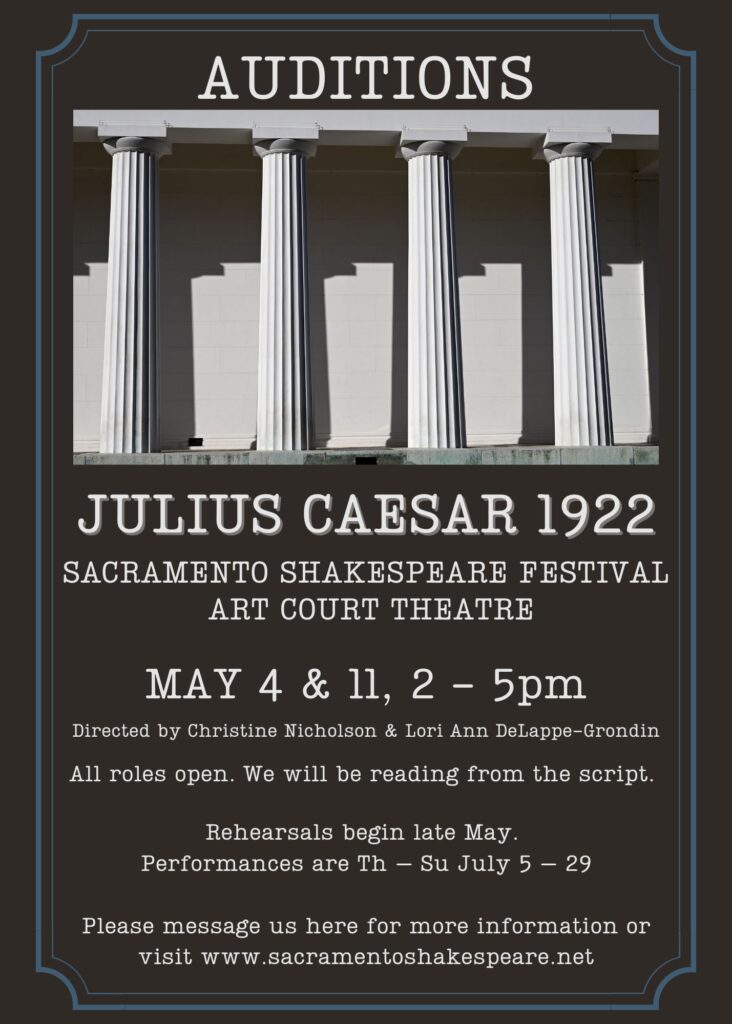
CELEBRATION OF LIFE FOR LENORE JUSTMAN
March 3, 2024
We are inviting you to a special celebration of life event for Lenore Justman, who has been a pillar of our community for over three decades. Join us in honoring Lenore’s legacy and share your stories and memories with us. It will be a time of love, remembrance, and community support. We look forward to seeing you there.
This past summer our theatre community lost one of the sweetest souls to grace our theatre.
Lenore Justman.
Actor, costumer, stitcher, wardrobe mistress, concierge, friend. A pillar of our theatre community at Sacramento Shakespeare Festival and an ardent lover of all things wonderful. Her laugh made you smile, even if it was just in memory. She was always willing to pitch in and help.
I was honored to work with her on my very first show here in Sacramento, “The Wake of Jamey Foster” at The Show Below. She was our costume designer and cared so much about how we felt about what we were wearing and if it matched our characters. That started a three-decade friendship that I cherish.
Many of you may also remember her as the “concierge” at the park for the festival. She was often the welcoming face you saw as you headed into the “bowl” or the person who sold you our merchandise. She would welcome everyone, have a chat, have a laugh, and wish you a pleasant experience.
If you knew Lenore, we’d love to hear your stories. Please join us.
When: Sunday, March 10, 2024 at 6:00 pm.
Where: Art Court Theatre, Sacramento City College, 3835 Freeport Blvd. (parking on 12th Ave. is free on Sundays)
What: Please bring your stories to share over some snacks and drinks. If you have a treat you’d like to share, please note the ingredients on a small card so those with food sensitivities can be informed. Also, please no alcohol (we are on campus.)
Plates/napkins/cups would also be appreciated.
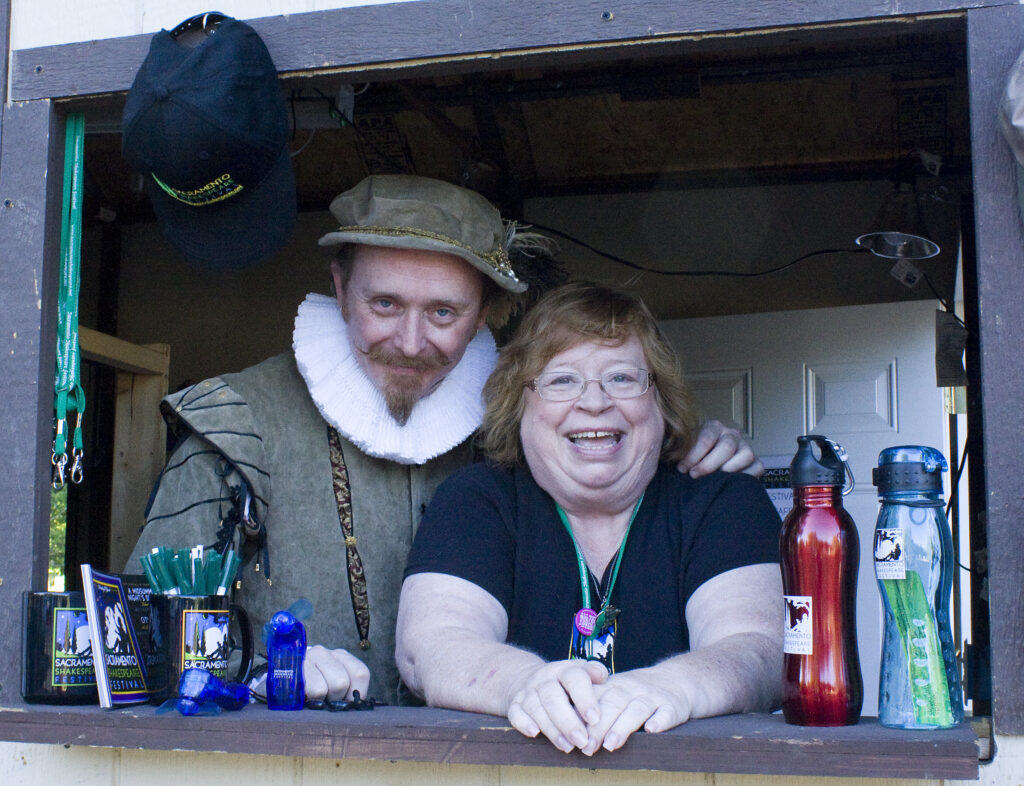
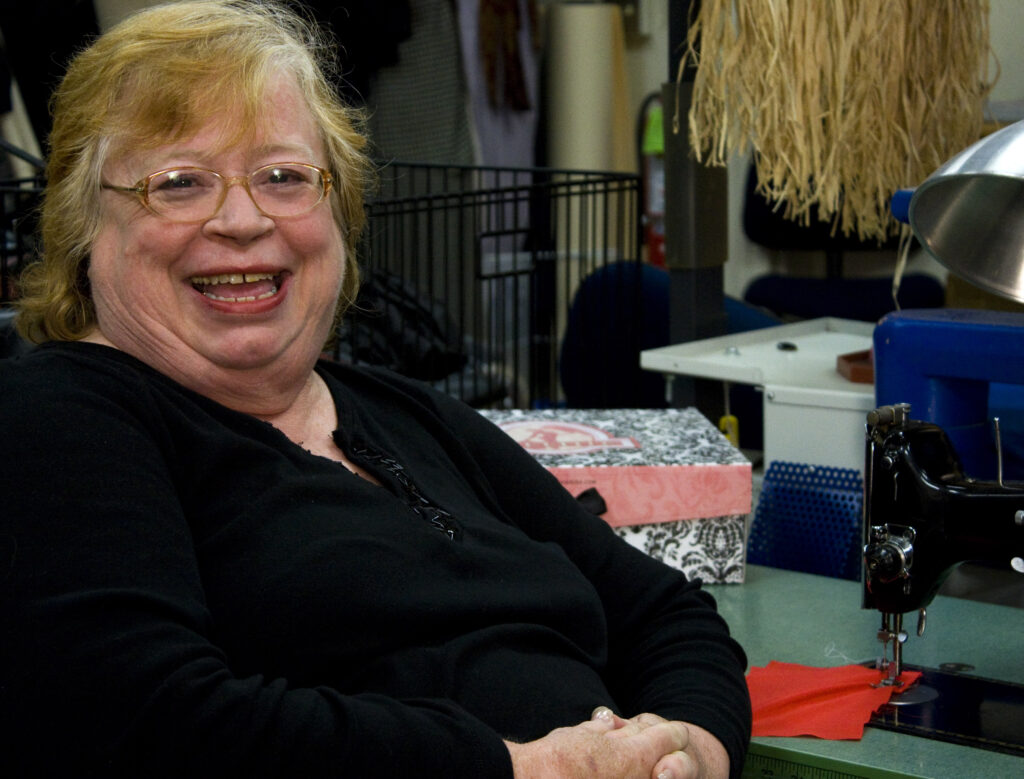
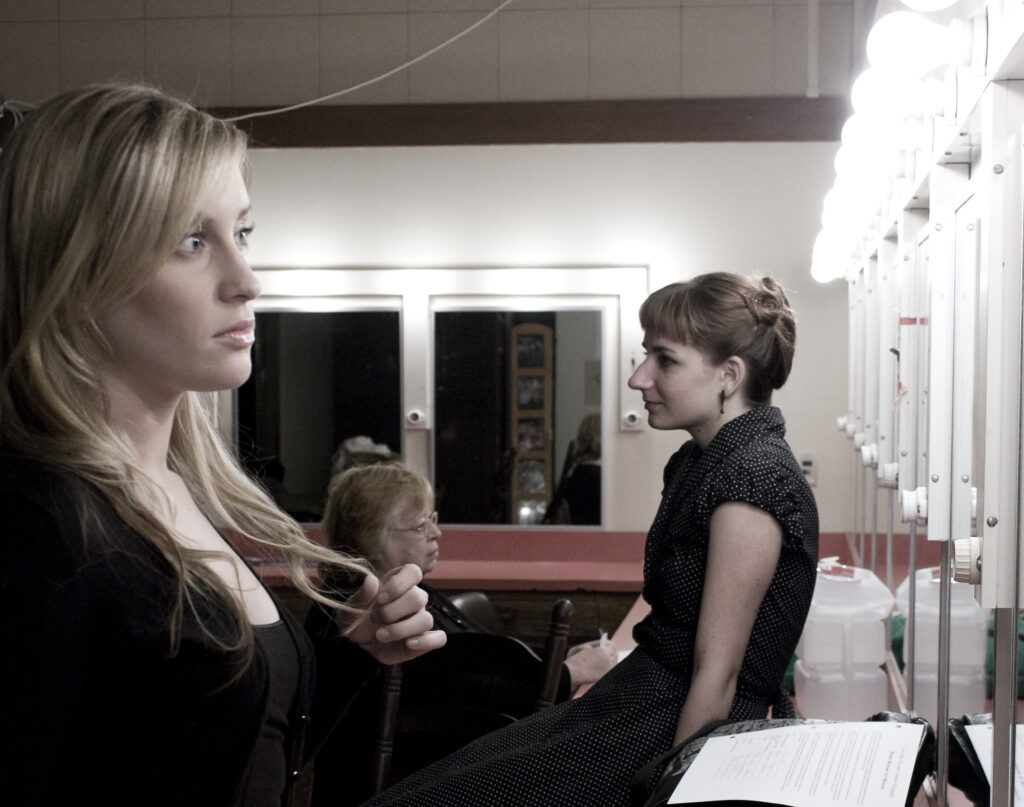
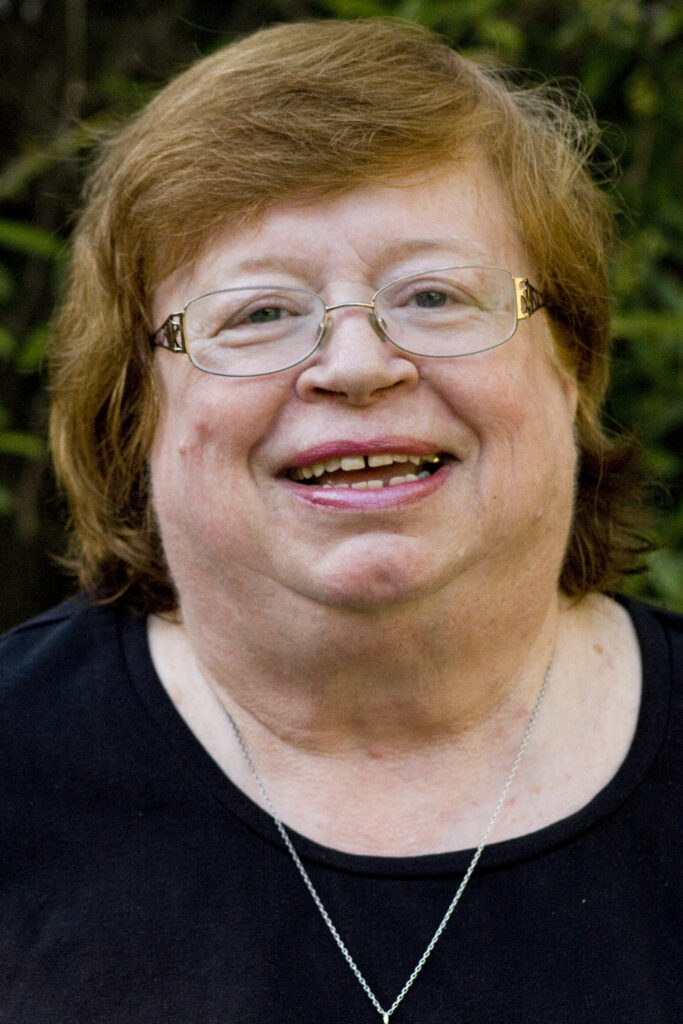

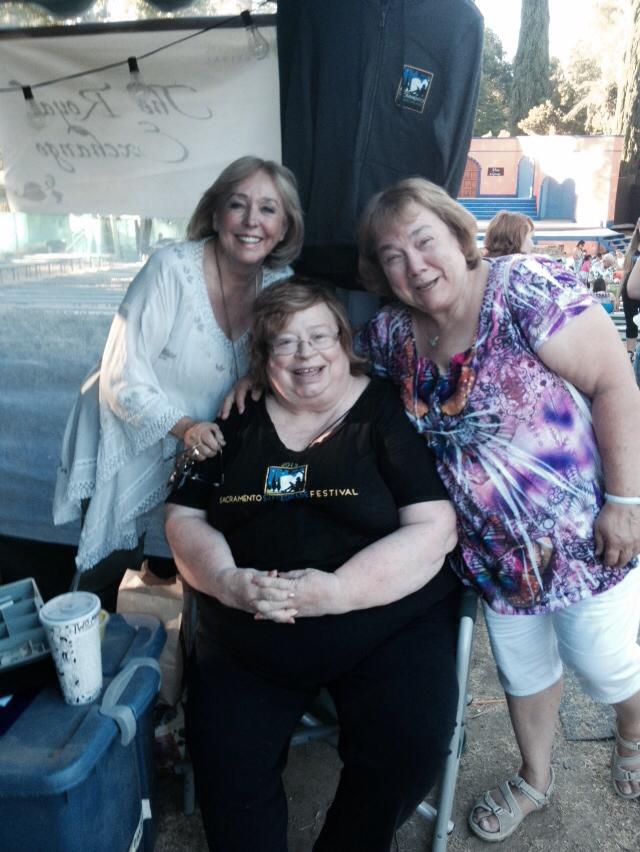

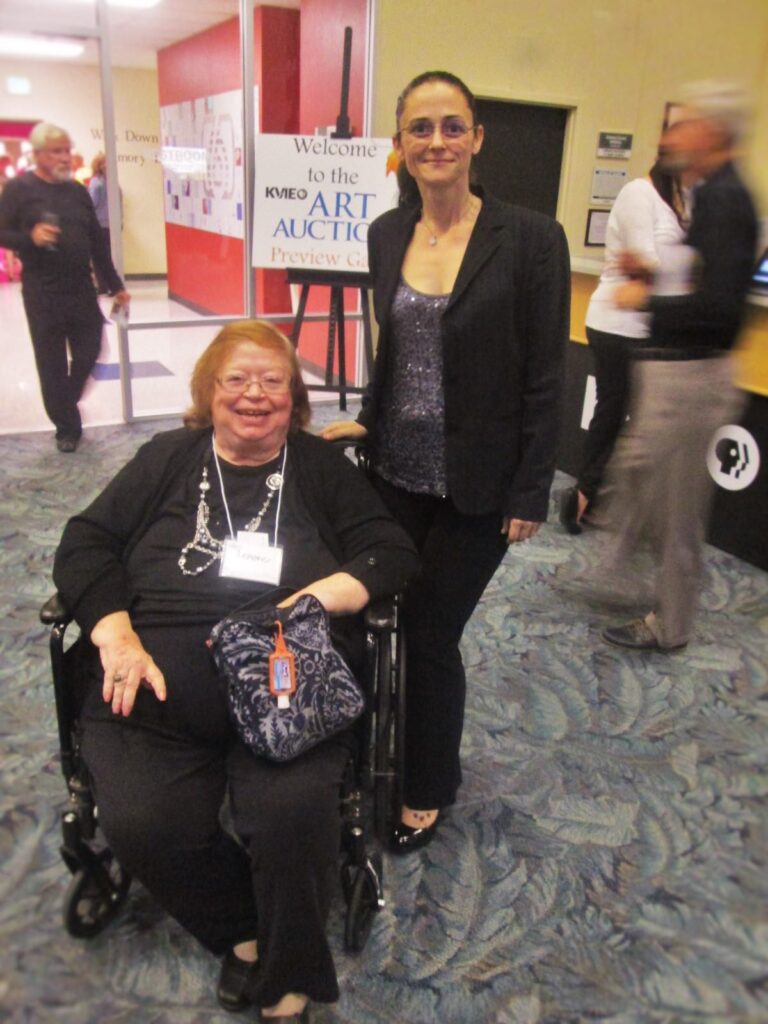
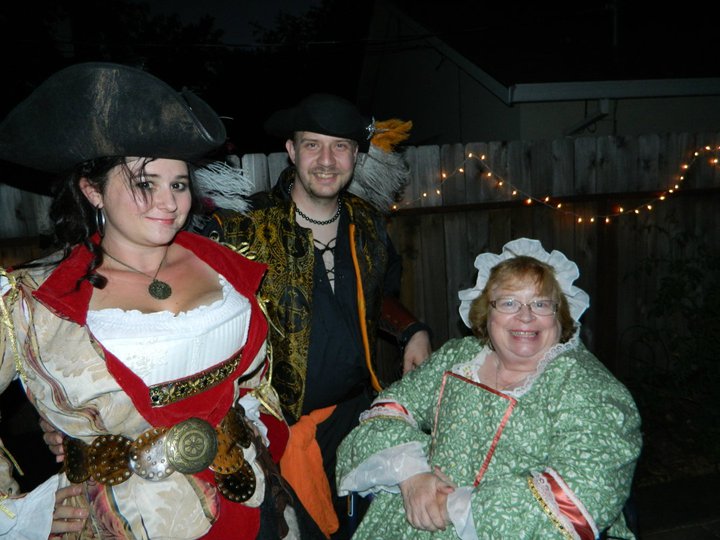
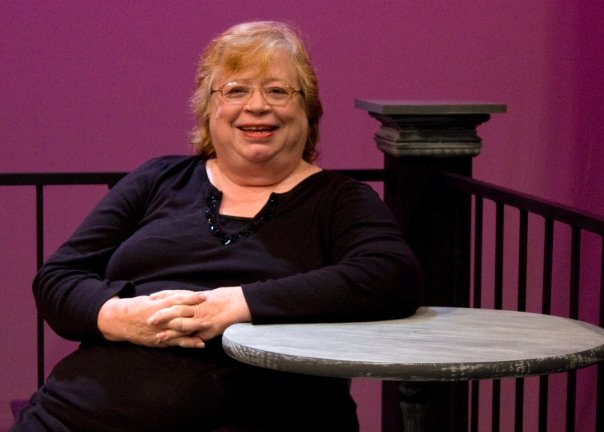
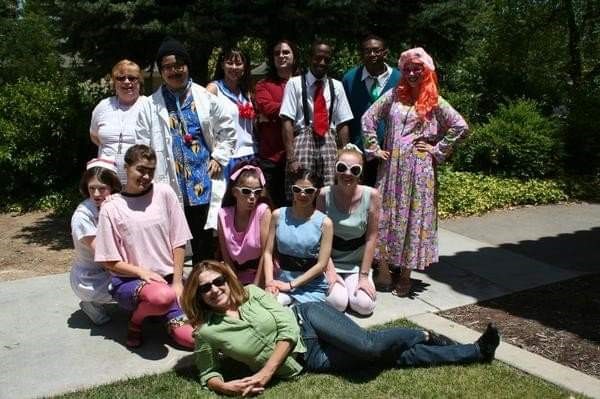
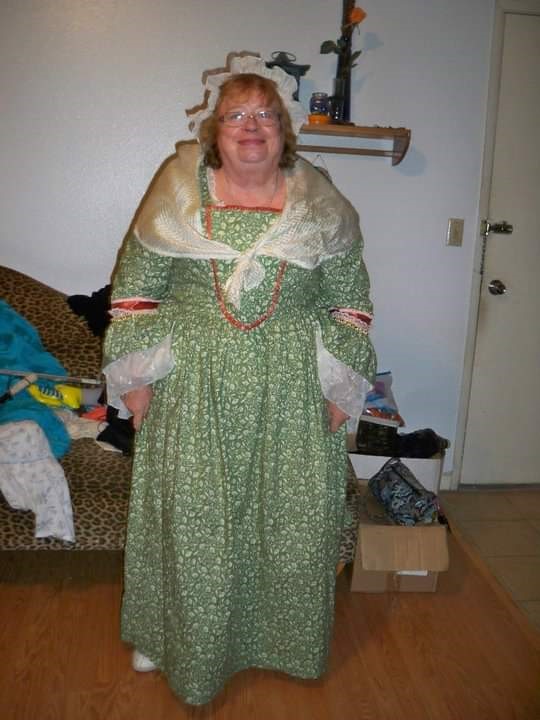
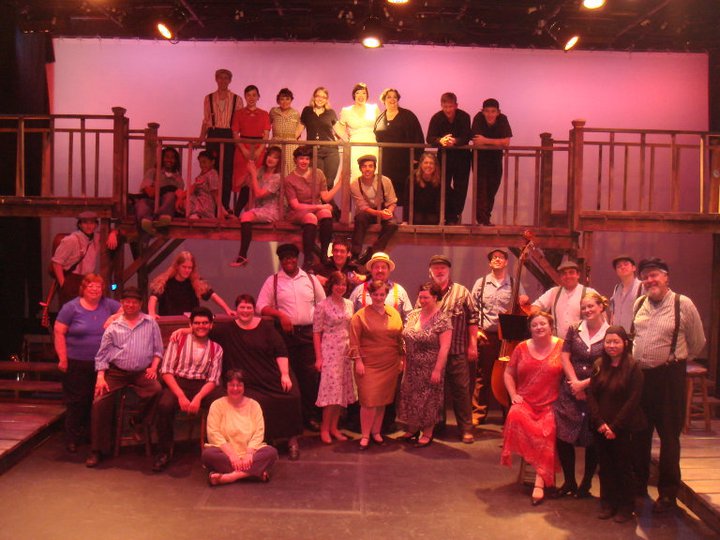
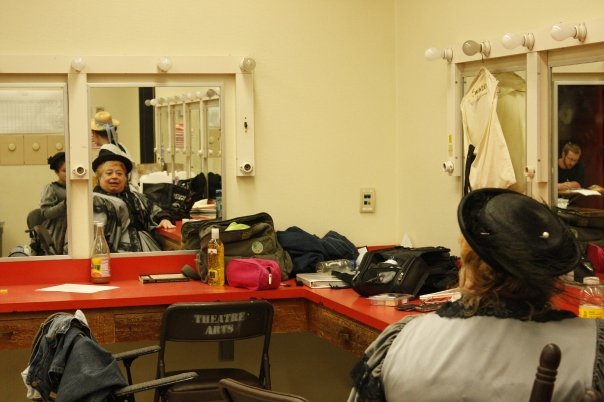
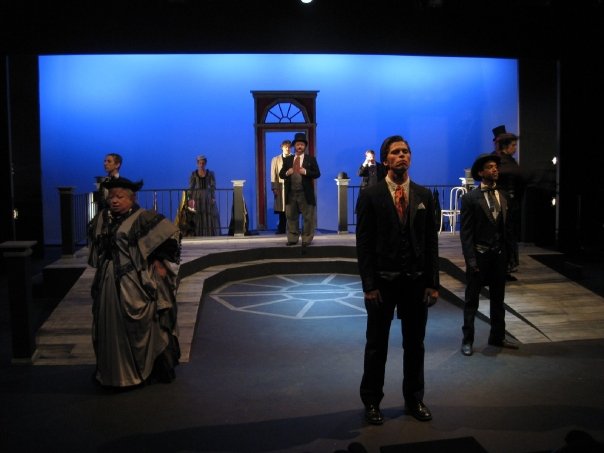
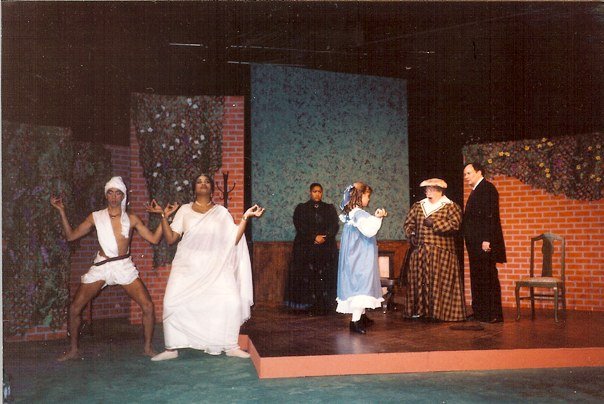
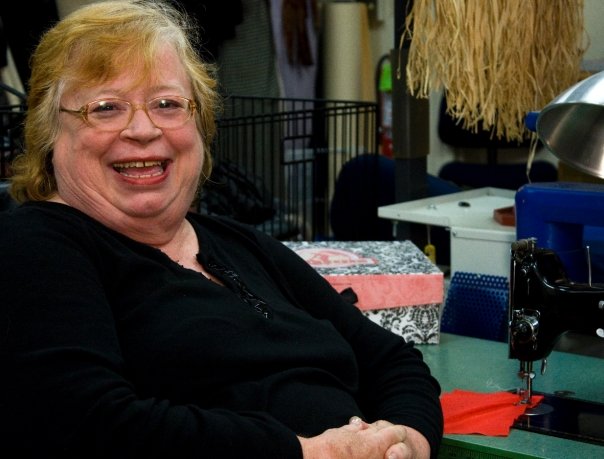
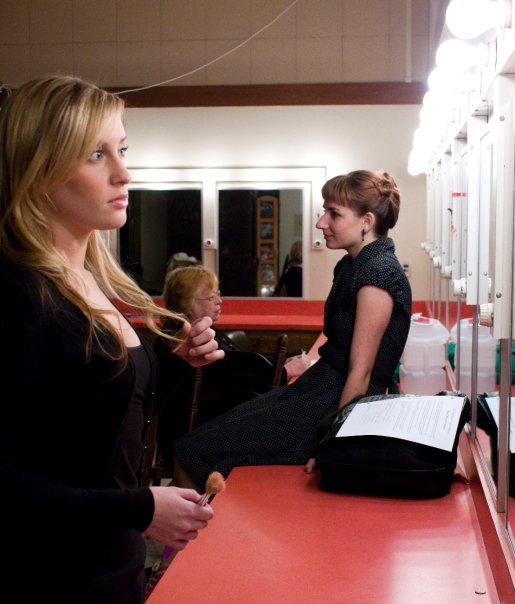
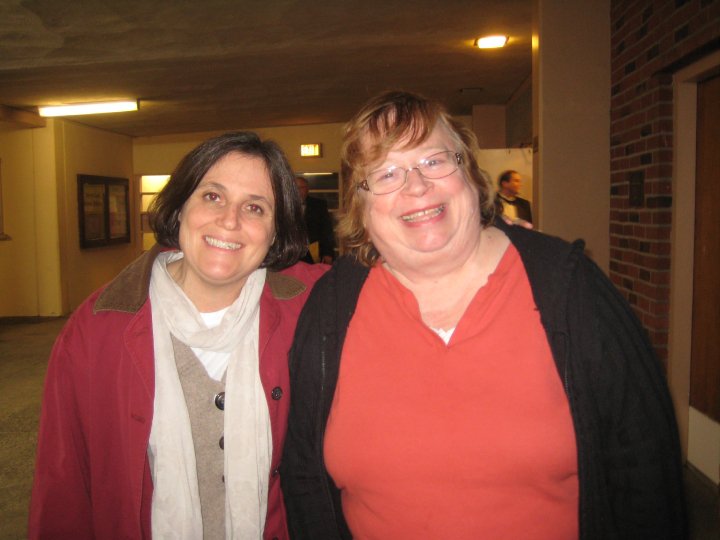

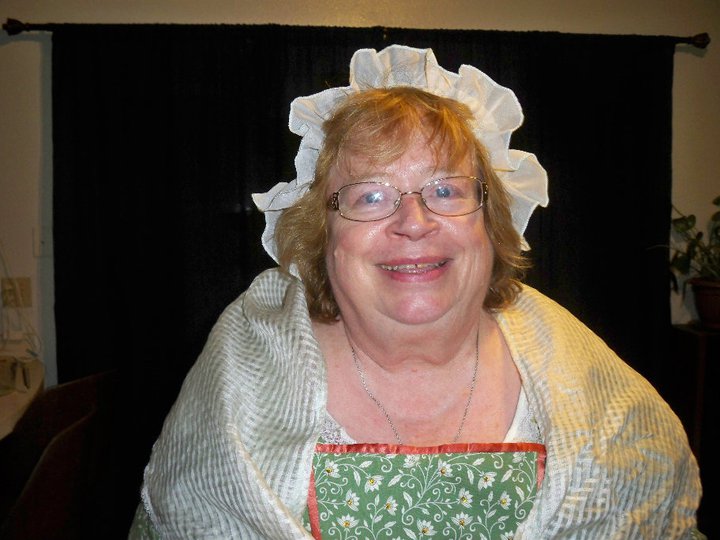

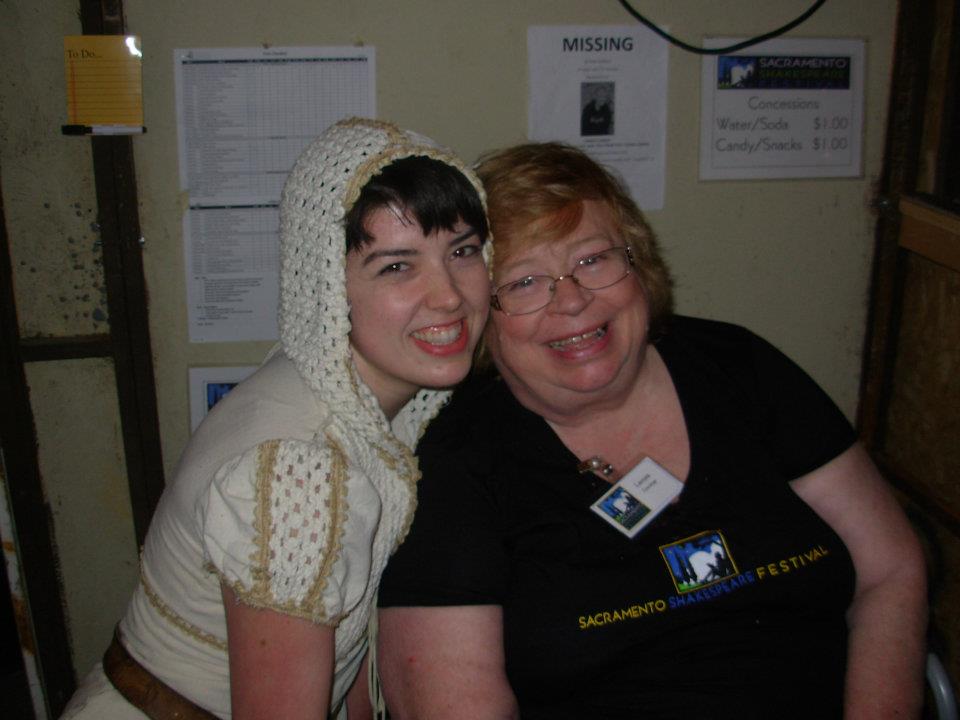
Catch us on Studio40 Live
We have been invited to appear for a short segment on Studio40 Live on Thursday, July 20 at noon. Check us out, get your tickets as you’ll surely be inspired by our witches to not miss this show.
Tickets are going fast, so if you wish to join us as we close this show this weekend, please consider buying in advance. We cannot promise that we will have walk-in capacity at show time.
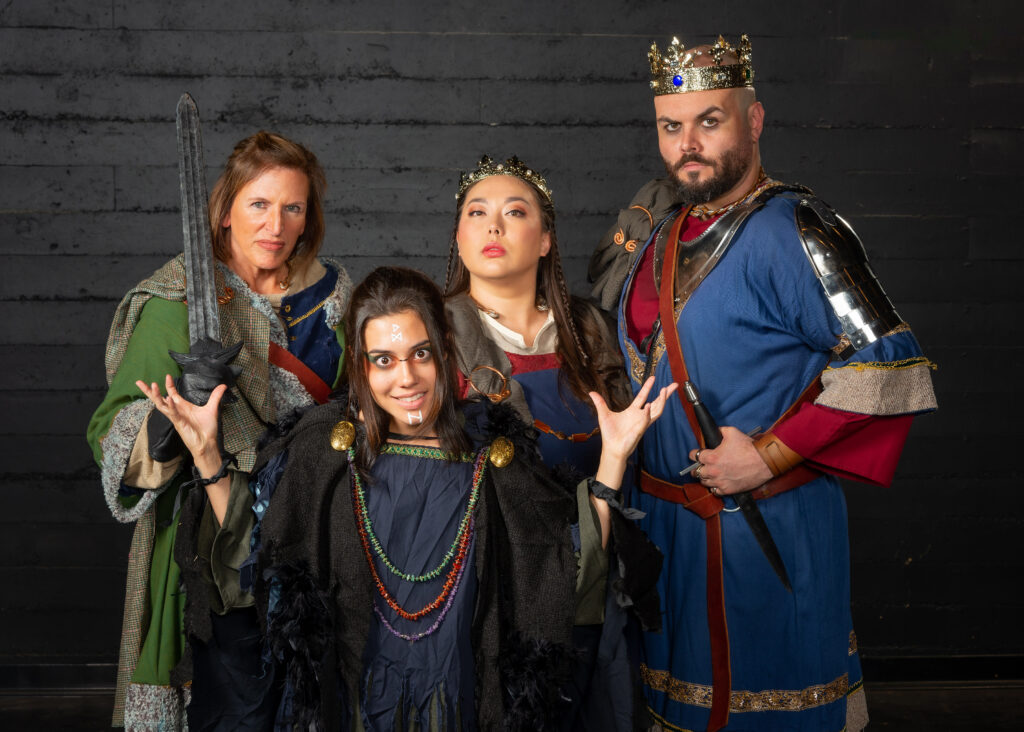
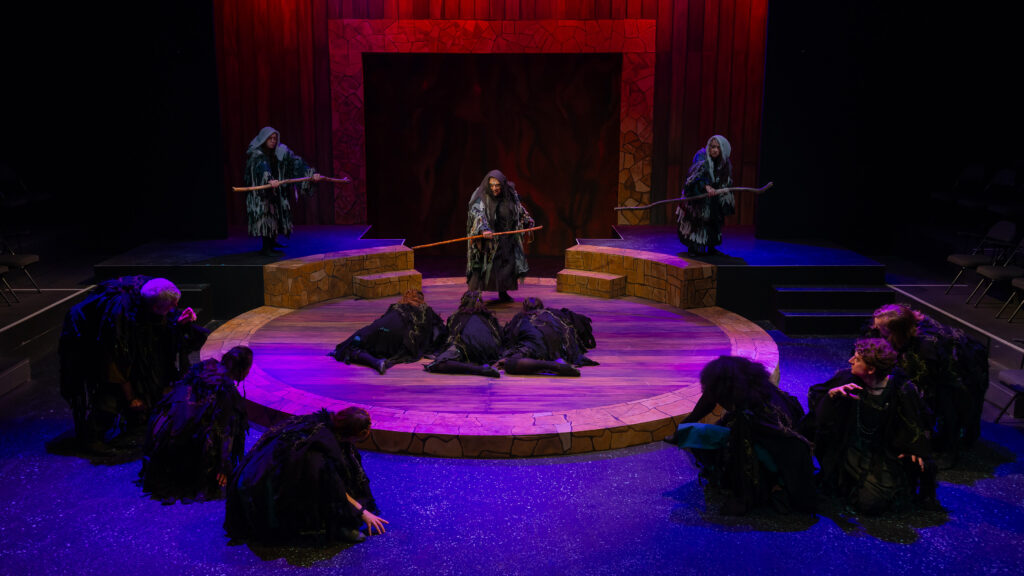
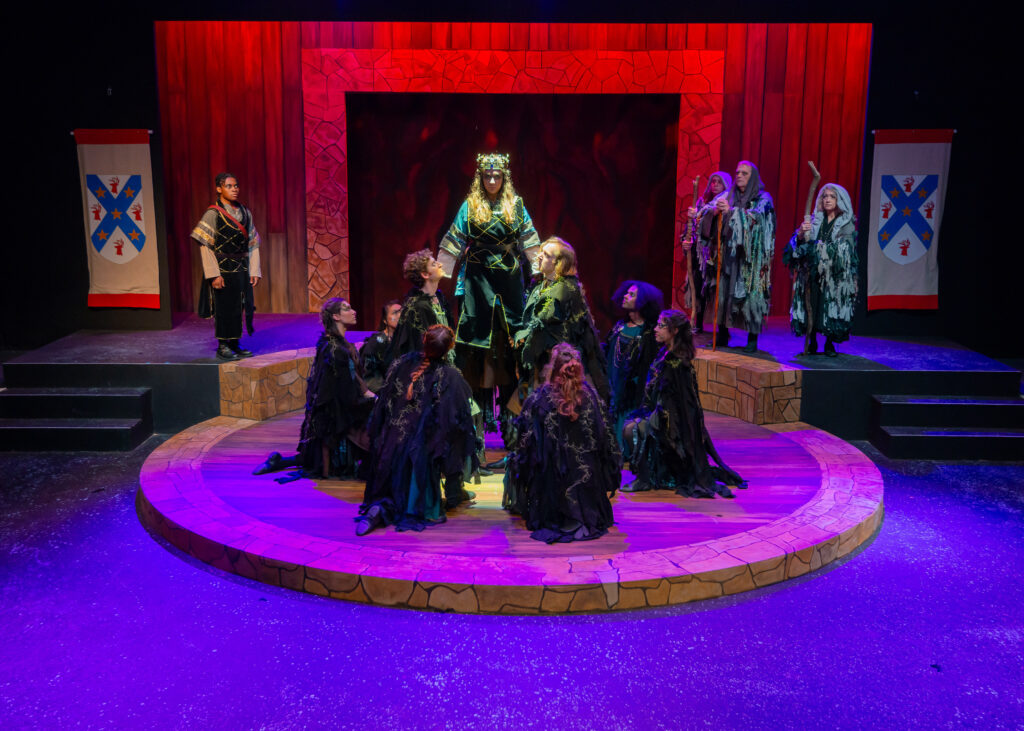
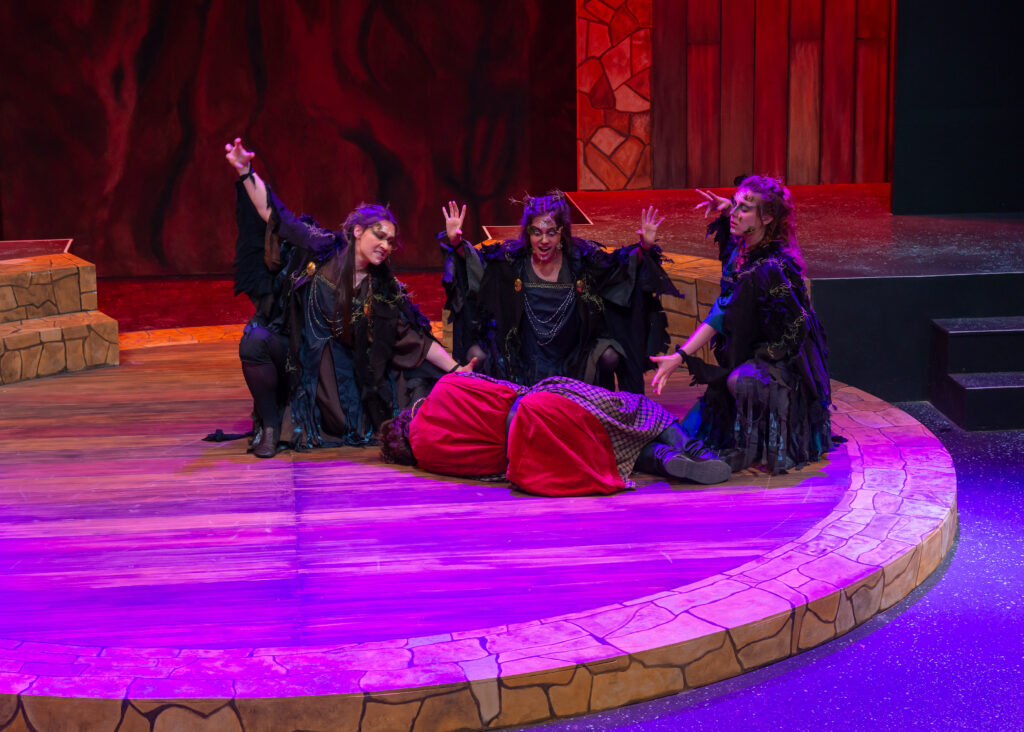
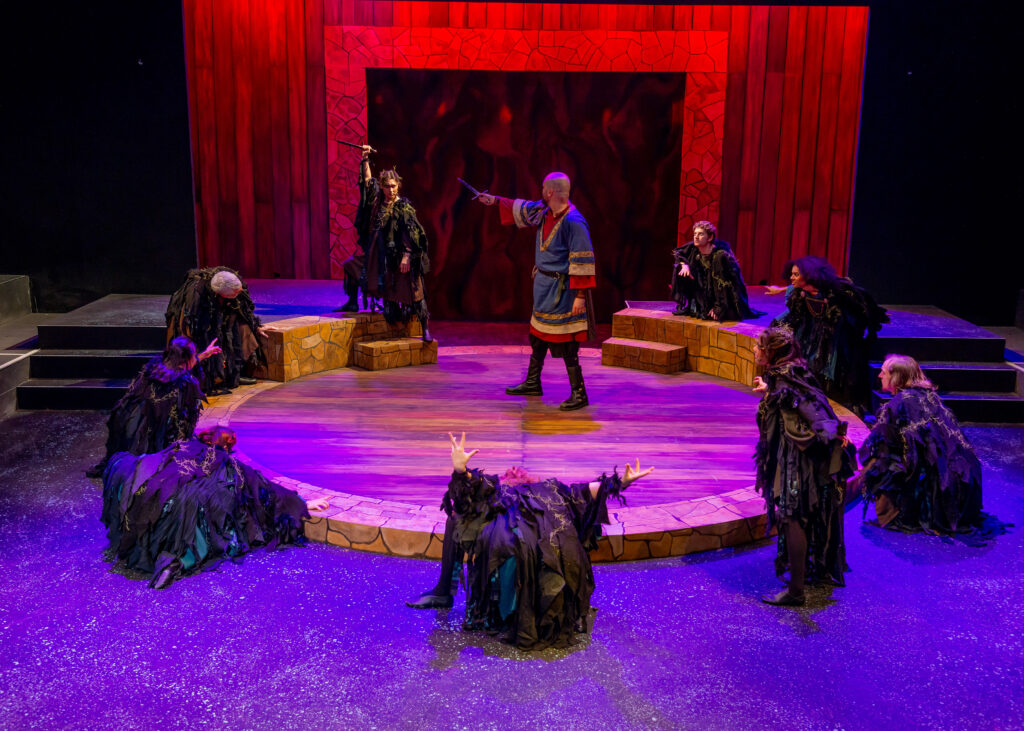
Director’s Notes – Christine
Macbeth opens July 7 and runs through July 23. Tickets available.
I love “Macbeth.” Let me just start with that. To me it is the most perfect of Shakespeare’s tragedies (and that is with great apologies to “Hamlet” and “King Lear,” both if which I dearly love). It packs so much into its two hours of playing time, revealing so much about the human psyche. There are those who disagree with me, who think that the structure is weak- that the second half of the play breaks or undermines the momentum of the narrative right about the time most tragedies are nearing the climax of the action. Heck, Shakespeare even inserts three long scenes between characters who are not Macbeth, one that is ten minutes long and that includes no death or mayhem.
But, to me, that is part of the power of the play. In the first half we see a “good” person seduced by the idea of power and status, and we watch as he justifies his own moral decay along with some incredibly despicable actions to achieve power. In the second half, we see how actions affect others, how one person’s actions and desires can influence and change the lives of others for better, or, in this case, much worse. And then we watch as people of all walks decide to act for the good, even in the face of the same challenges that beset the tyrant. Oh, and there are sword fights.
This is also the first time I’ve co-directed with someone. Lori-Ann and I have worked together for a long time, as actor/director, director/stage manager/actor/actor, and we work well together. I think that we both complement each other and fill in each other’s gaps. It’s been a wonderful collaboration. It is a fairly well-known theatrical fact that there are usually more women than men who audition for plays – at least two to one. And that Shakespeare, because he wrote in a time that women were not allowed on stage, wrote plays with no more than three women (maybe four, once in a while). We both also wanted to find a way to include as many of the people who auditioned for us (In fact, we were able to cast pretty much everyone who auditioned for us and that has been exciting). So, we looked at a time that could incorporate more women as warriors, and that would also be a time that included the possibilities of witches existing. And we settled on Scotland’s semi-mythical past at the moment they kicked the Vikings out of their country. That way we were able to work with many more women and put together the strongest cast possible. We trust you’ll see why.
We have twenty-nine people in the cast and a large crew, a veritable town of people to tell the story of Macbeth, who probably lived in Scotland in the 11th century, and also probably should have become king because he was the strongest and most successful warrior. And I, we, sincerely hope that you enjoy your journey with us into the heart of darkness that is the “Tragedy of Macbeth.”
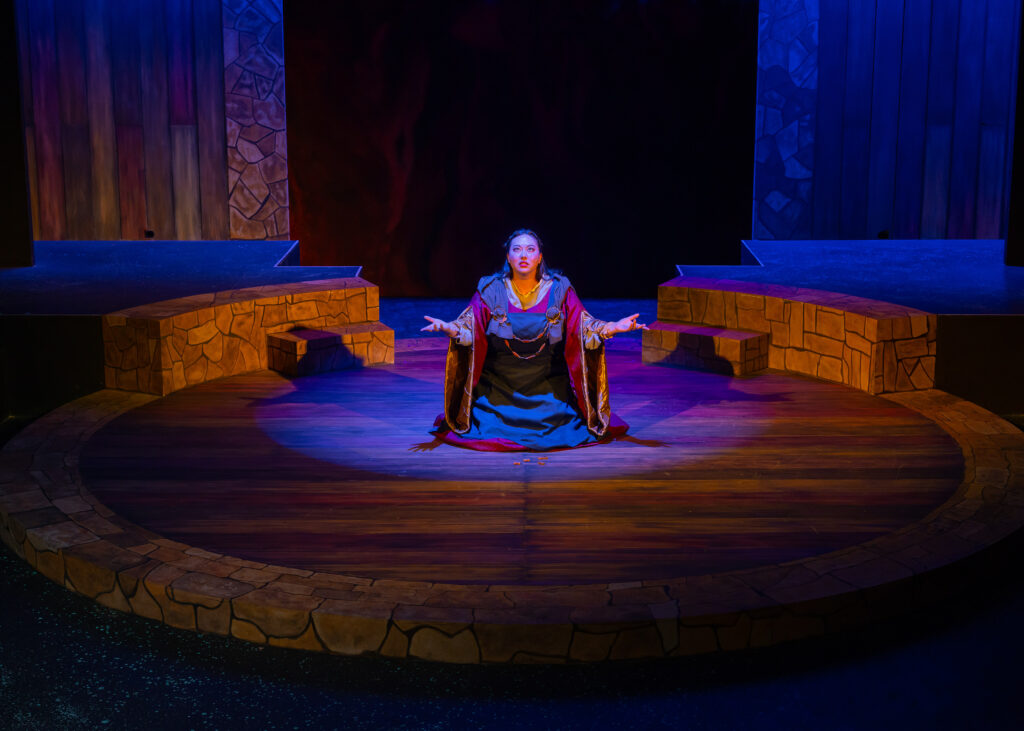
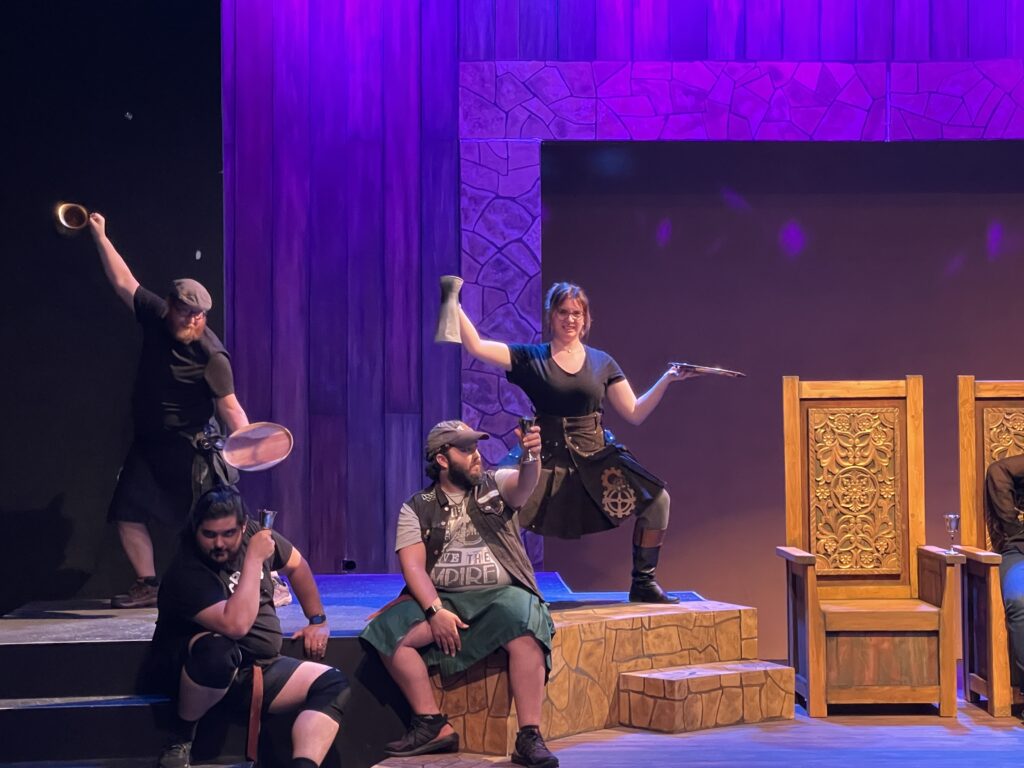
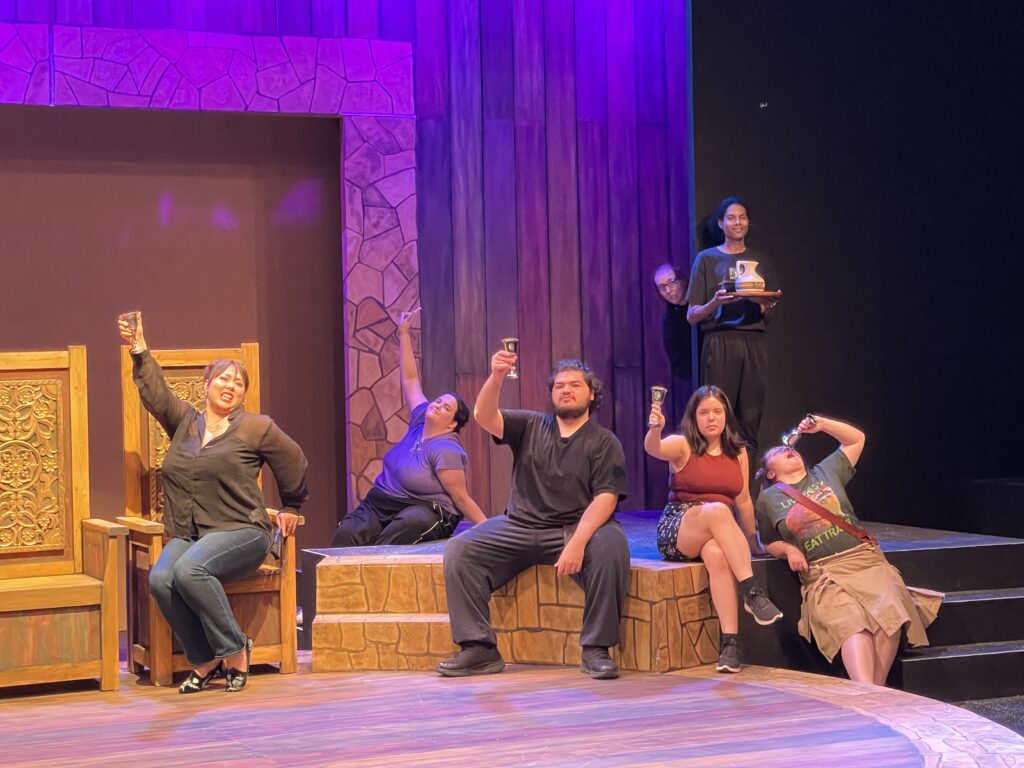
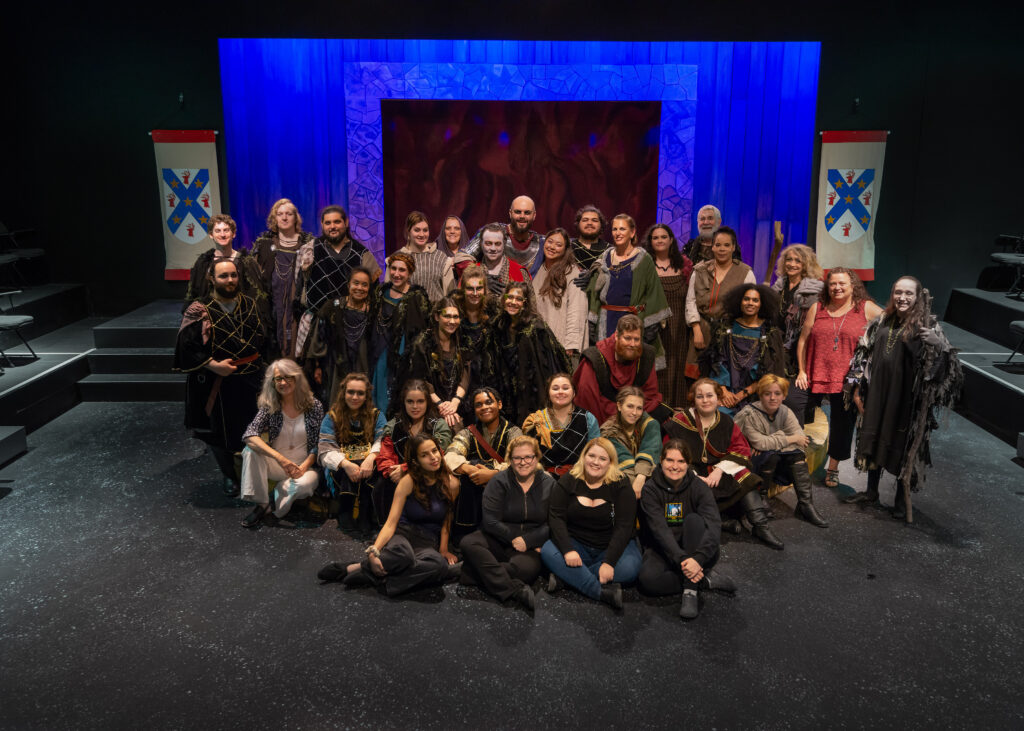
Meet the Cast of Macbeth – Part 10
Macbeth opens July 7 and runs through July 23. Tickets available.
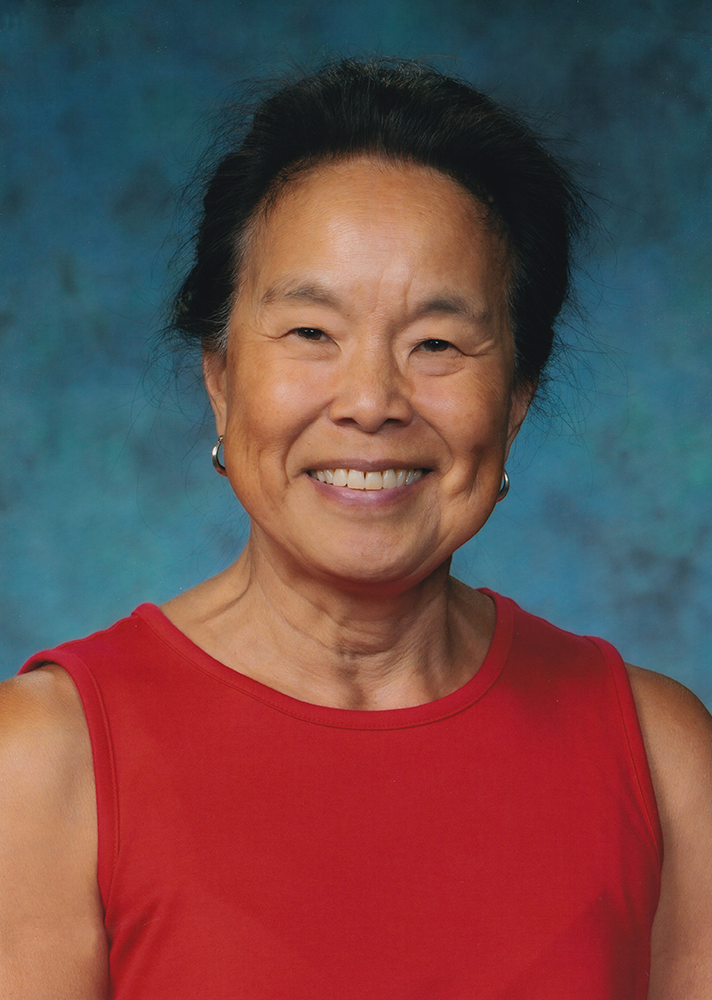
Holly Nicola (Witch Team 6/King)
Becoming involved in 2014, after retirement, in theater with Sacramento City College, Holly has since been cast in 12 of its major productions. twice before in its Shakespeare Festival, in The Three Musketeers and The Count of Monte Cristo. Her first experience in Cannery Row got her hooked! Holly enjoys minor roles and being part of the ensemble. Other productions in which she has been cast include The Great Gatsby, The Music Man, Carrie – the Musical, Miracle on 34th Street and The Curious Incident of the Dog in the Nighttime and two British pantos, Alice in Wonderland and Snow White. Her involvement has increased her appreciation of theater, due to becoming more aware of all the hard work that goes on not only on the stage, but also behind the scenes.
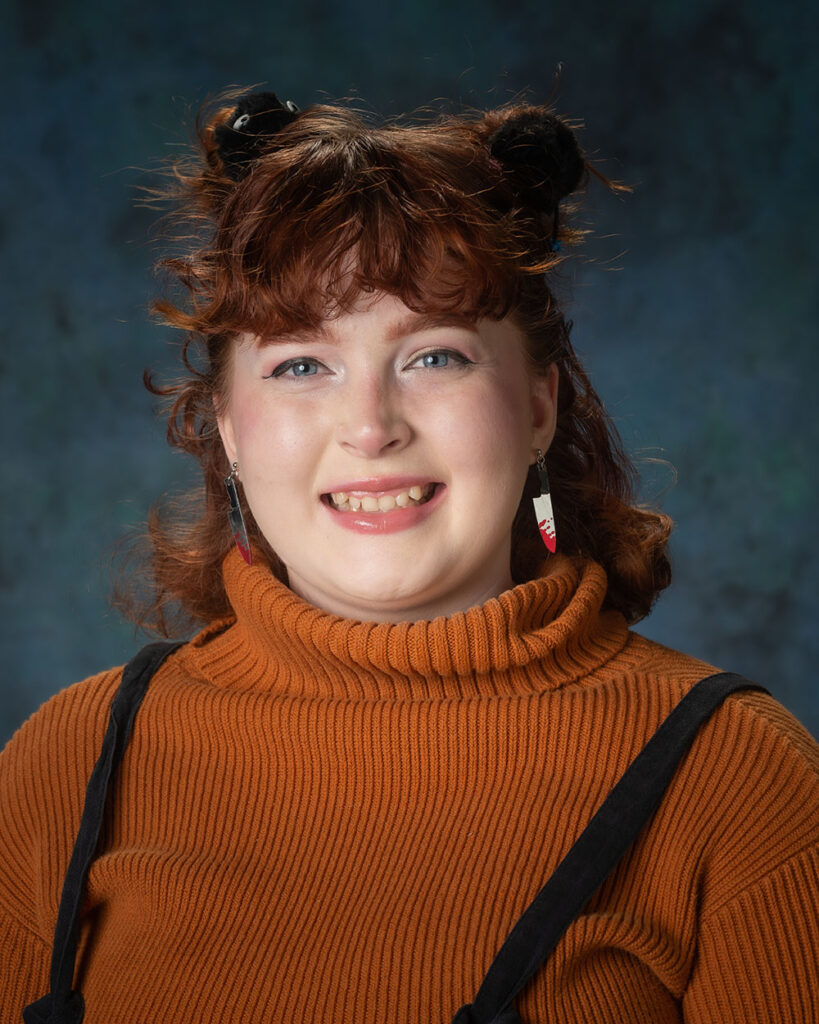
Ollie Stokes (Porter/Young Siward) Ollie Stokes is a new student at Sac City College, studying theatre. They have previously been in shows such as Carrie the Musical and Much Ado About Nothing at Butte College.
Meet the Cast of Macbeth – Part 9
Macbeth opens July 7 and runs through July 23. Tickets available.
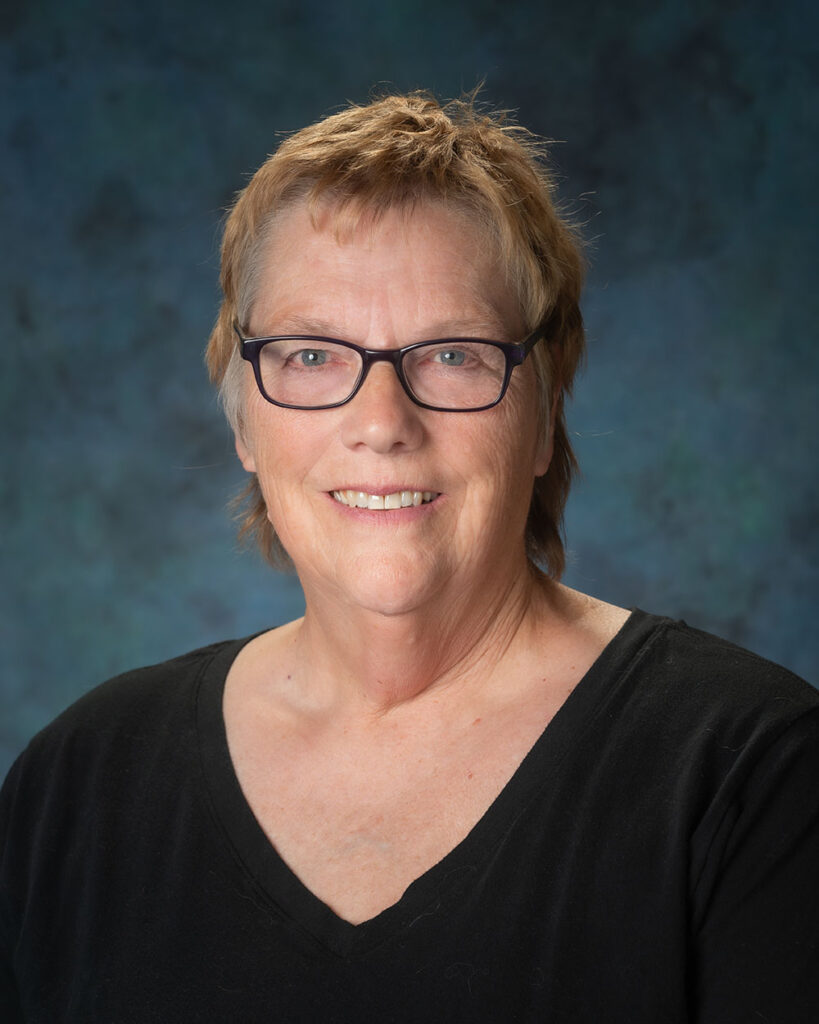
Joy Gee (Hecate) Joy returns to the Sacramento Shakespeare Festival from Michigan, where she spent several years building a children’s community theater program. Performing on stage is a rare experience for Joy, who is usually listed in programs as a stage manager or technician. Joy is also a novelist, journalist, and playwright whose stage and screenplays have won awards locally and internationally.
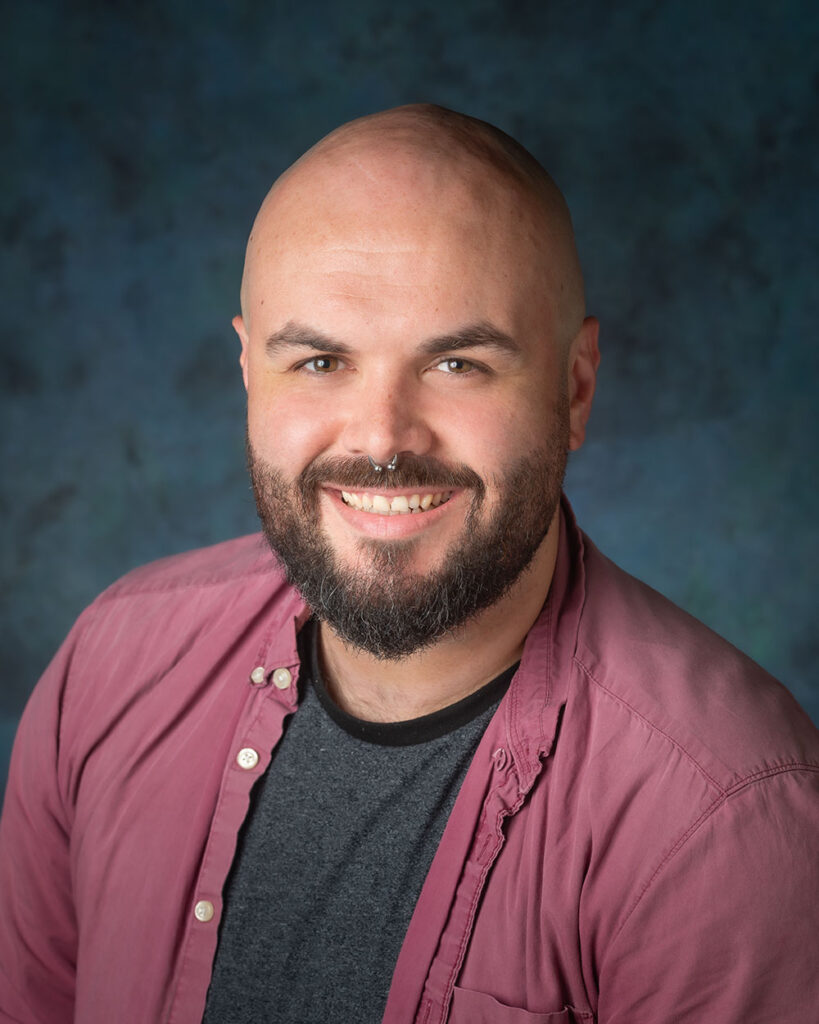
Brandon Lancaster (Macbeth) Brandon is elated to appear in Sacramento Shakespeare’s production of Macbeth. Brandon is a proud Alumnus of the Acting Apprenticeship Program at Capital Stage, where he appeared in the company’s production of Good People by David Lindsay-Abaire, and various other roles. Previous credits also include The MotherF**cker With The Hat(Big Idea Theatre), Brilliant Traces (Ovation Stage), The Grapes of Wrath, and Julius Caesar(Sacramento Theatre Company).
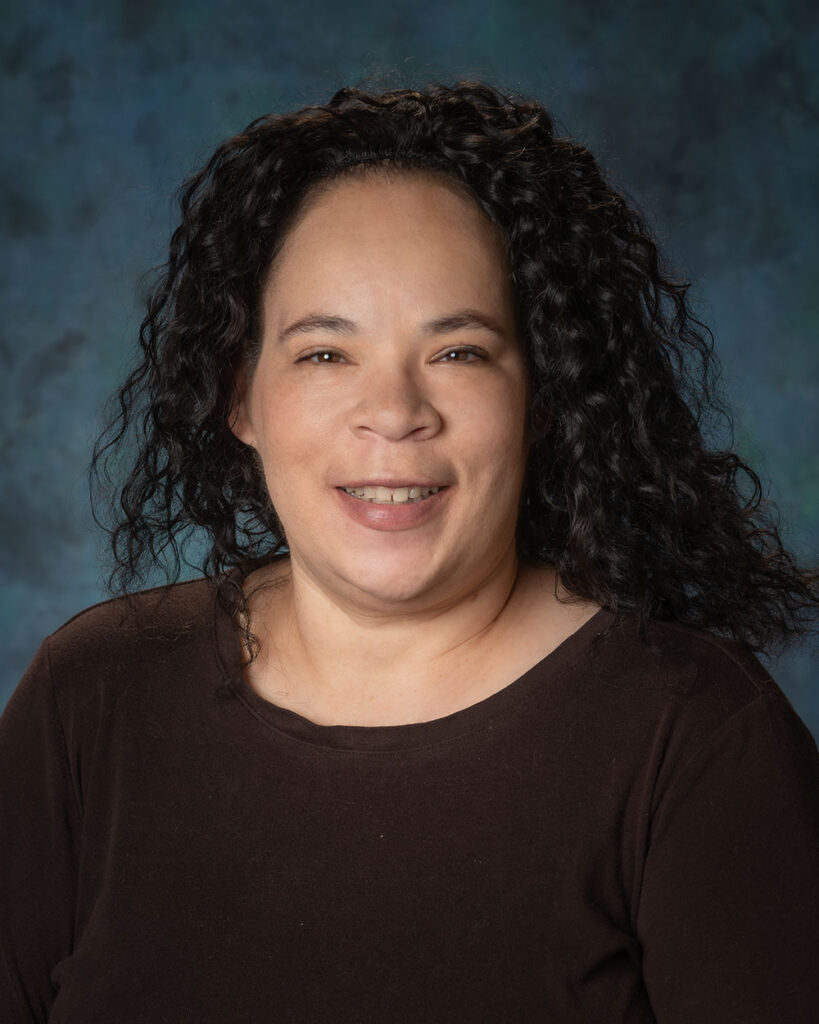
Sarah Palmero (Duncan/Messenger) Sarah is grateful to be on stage at the Sacramento Shakespeare Festival again. Most recently seen as Mr. Shepherd/Mrs. Croft in BEYOND PERSUASION, she also enjoyed performances as Horatio in SSF’S production of HAMLET and Gertrude in Sac State’s production of the same.
Meet the Cast of Macbeth – Part 8
Macbeth opens July 7 and runs through July 23. Tickets available.
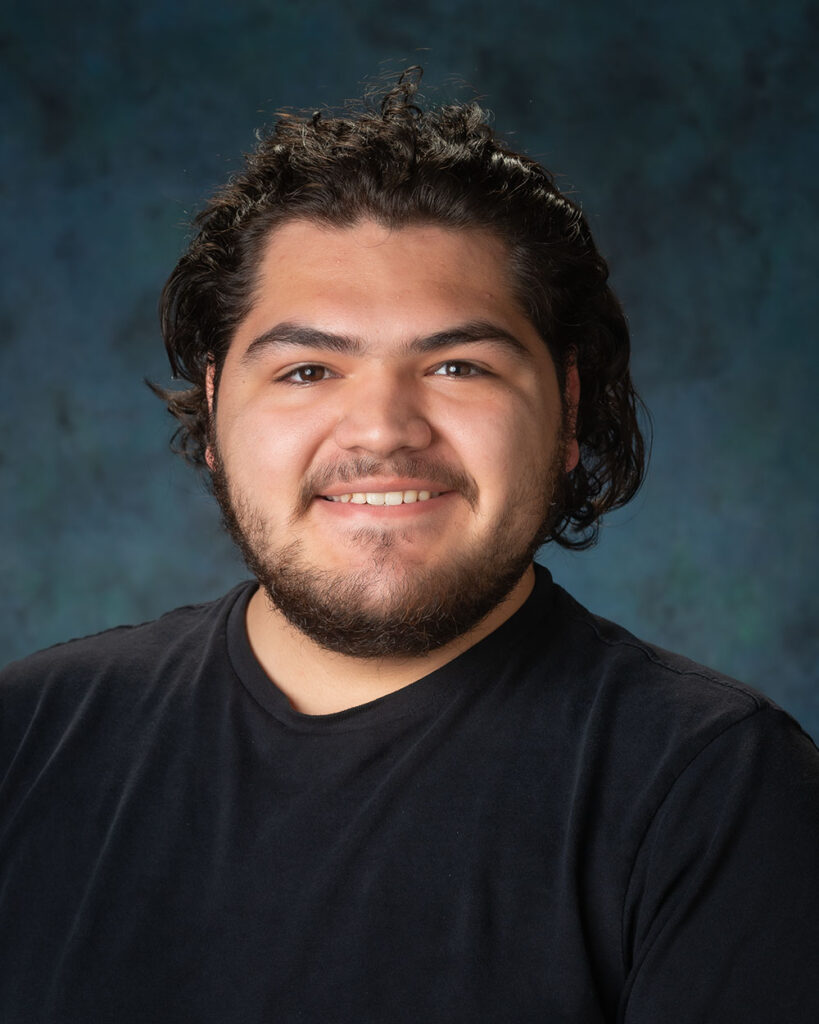
Cuautli Quezada-Gardea (Lennox) This is Cuautli’s first show with SSF and is excited about the opportunity. Cuautli mostly has been performing with Falcons Eye Theater most notably in ????????? ?????’? ????? where they played Puck and recently ???????? where they were part of the chorus. Cuautli plans to continue studying acting at ARC to work towards becoming a professional actor in the future.
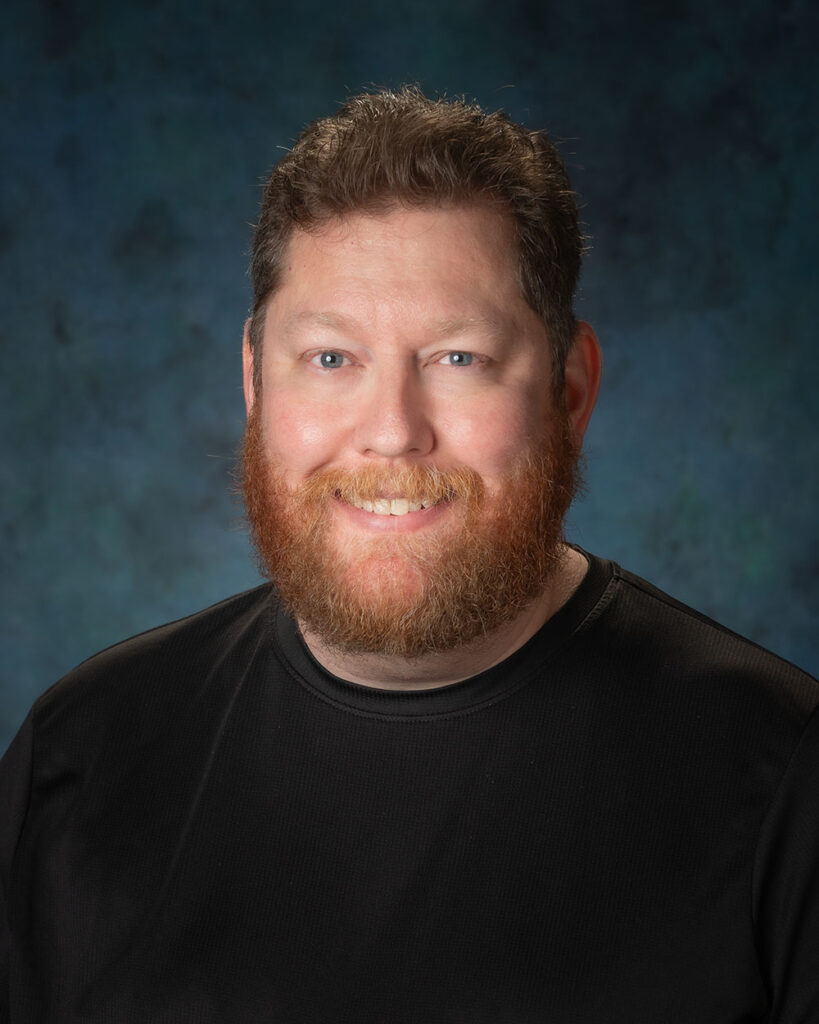
Dennis Redpath (Siward/Duncan’s Servant) Dennis started in theatre taking courses at the University of Hawaii and later the University of Montana. After a long break he returned to performing in his first show with City Theatre, the 2013 production of After Juliet. Since then he has been active with both City Theater and the Sacramento Shakespeare festival productions of Much Ado About Nothing, The Uninvited, Midsummer Night’s Dream, Pride and Prejudice, The Great Gatsby, Henry V, and The Curious Incident of the Dog in the Night-time.
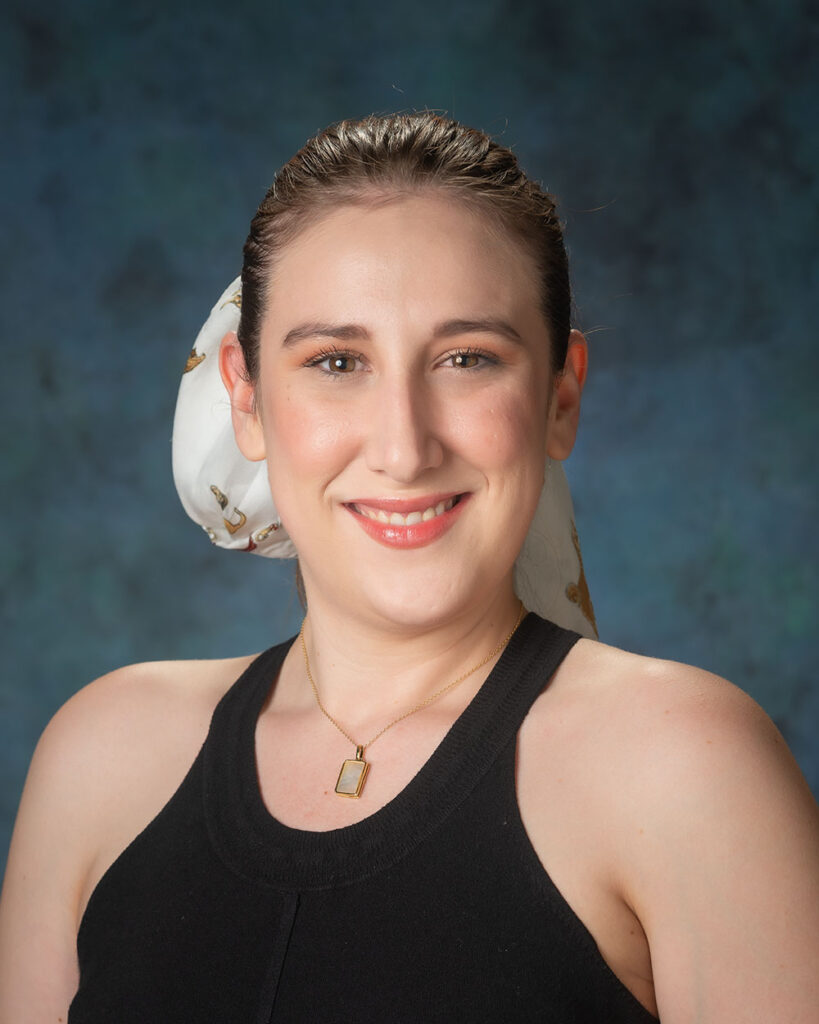
Lauren Graffigna (Witch Team 6/Lady Macduff) Lauren is making her Sacramento Shakespeare Festival debut. She is elated to be back at Sacramento City College where she recently performed as Segismundo in Life is a Dream and Rose Red in Snow White: A British Panto. You may have also seen her at the B Street Theatre in the 24 Hour Play Festival’s Norwegian Death Cleaning. Lauren is grateful to be working with Christine and Luther again and with Lori-Ann for the first time- I appreciate your kindness, vision, and leadership. Lauren would also like to thank the Devised Artist Julianna, the Fight Choreographer Dave, the Costume Designer Nicole and her team, and a resounding thank you to our stage managers Hannah and Erika! Above all, Lauren is thankful to her support system of family, friends, and coworkers who make it possible for her to continue to hone her acting skills and pursue her passion for theater arts.
Meet the Cast of Macbeth – Part 7
Macbeth opens July 7 and runs through July 23. Tickets available.
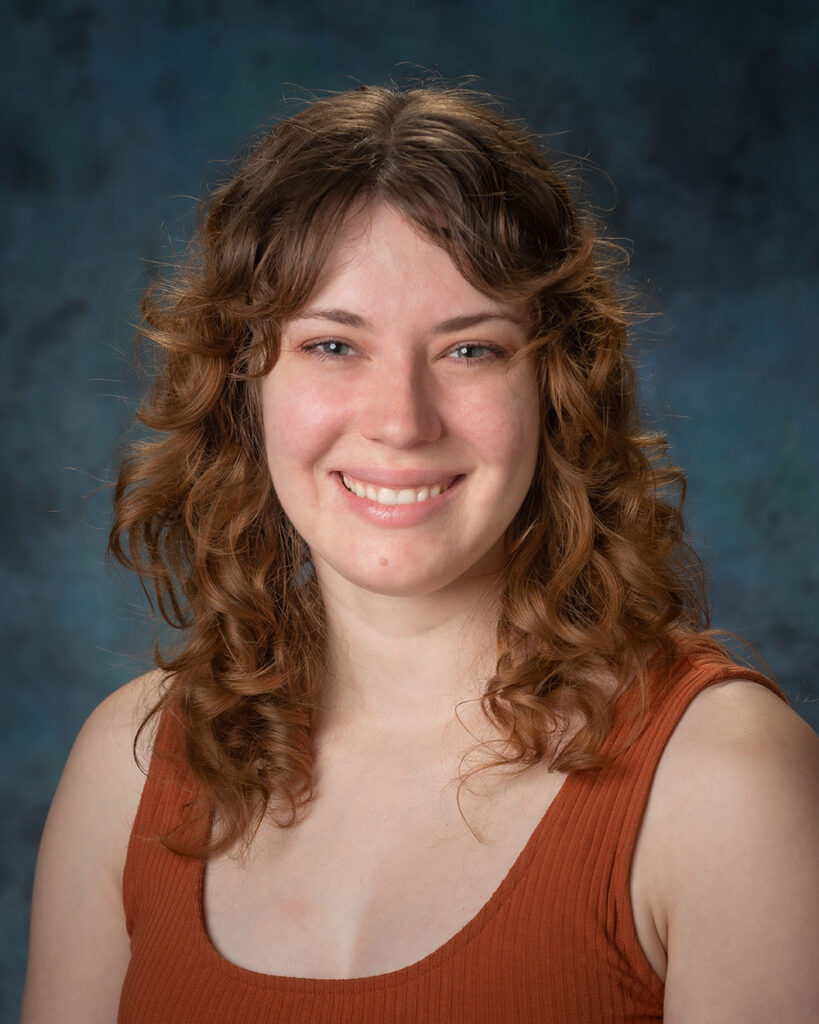
McKenna Sennet (Witch 2, Macduff U/S) McKenna is thrilled to be a part of yet another Shakespeare production. She graduated from Sacramento State last spring with a BA in Theatre and has long dreamed of finding a career in acting and teaching. After directing the department’s senior production of Spring Awakening (1906), McKenna plans on pursuing directing as well. Favorite performances include Hamlet (Hamlet, Sacramento State), Bev/Kathy (Clybourne Park, Solano College Theatre) Lady Macbeth (Macbeth, Solano College Theatre), and Christopher Boone (The Curious Incident of the Dog in the Nighttime, Solano College Theatre). While theatre is her passion, McKenna has also acted in several short films. She hopes you enjoy the witchy business, and does not apologize for spooking you.
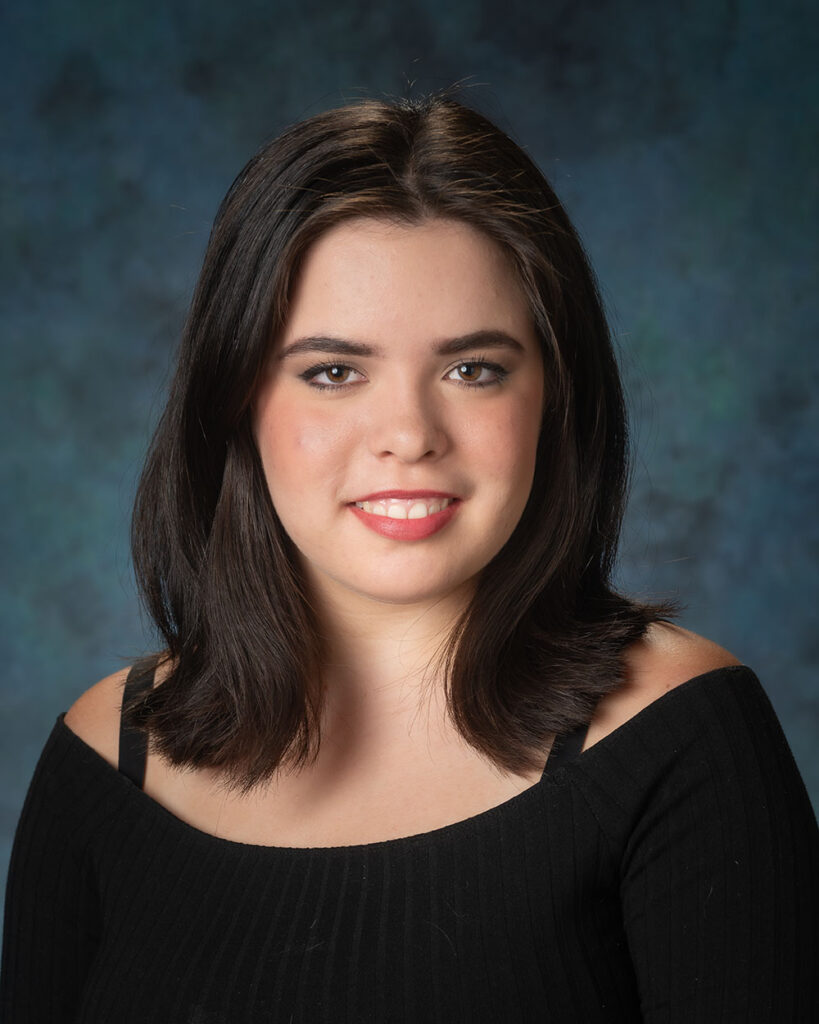
Lauren Ormond (Caithness/Apparition/Cawdor Fighter)
Lauren Ormond is so excited to be in her second Sacramento Shakespeare Festival production! She has previously been in several City Theatre Productions including Home for the Holidays, Decision Height (Carol Henderson), Romeo and Juliet (Sampson), Life Is A Dream (El Bobo), and Beyond Persuasion (Louisa Musgrove/Mrs. Clay). She would like to thank her family and friends for their unending love and support.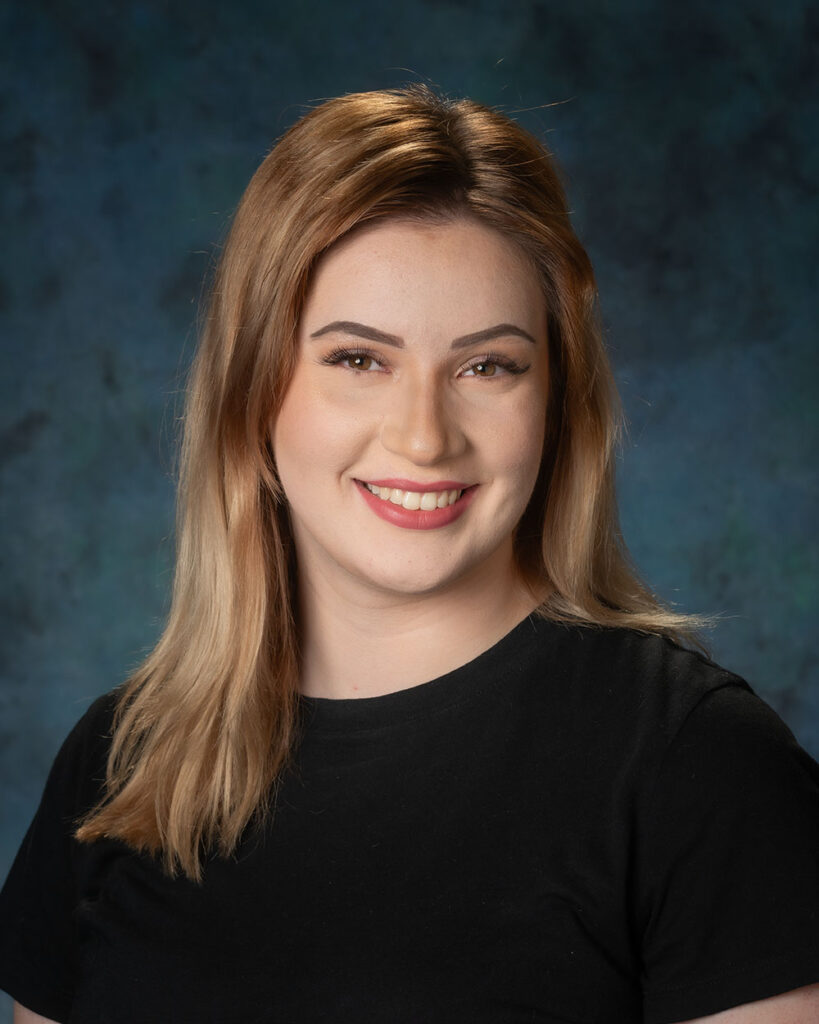
Phoebe Olson (Macbeth Servant/Cawdor Fighter/King)
Phoebe Olson is a second-year student at SCC and in her first production with Sacramento Shakespeare Festival/SCC. Phoebe was previously in Romeo and Juliet and The Crucible at Sacramento Theatre Company, and a Young Professionals Conservatory alum.Meet the Cast of Macbeth – Part 6
Macbeth opens July 7 and runs through July 23. Tickets available.
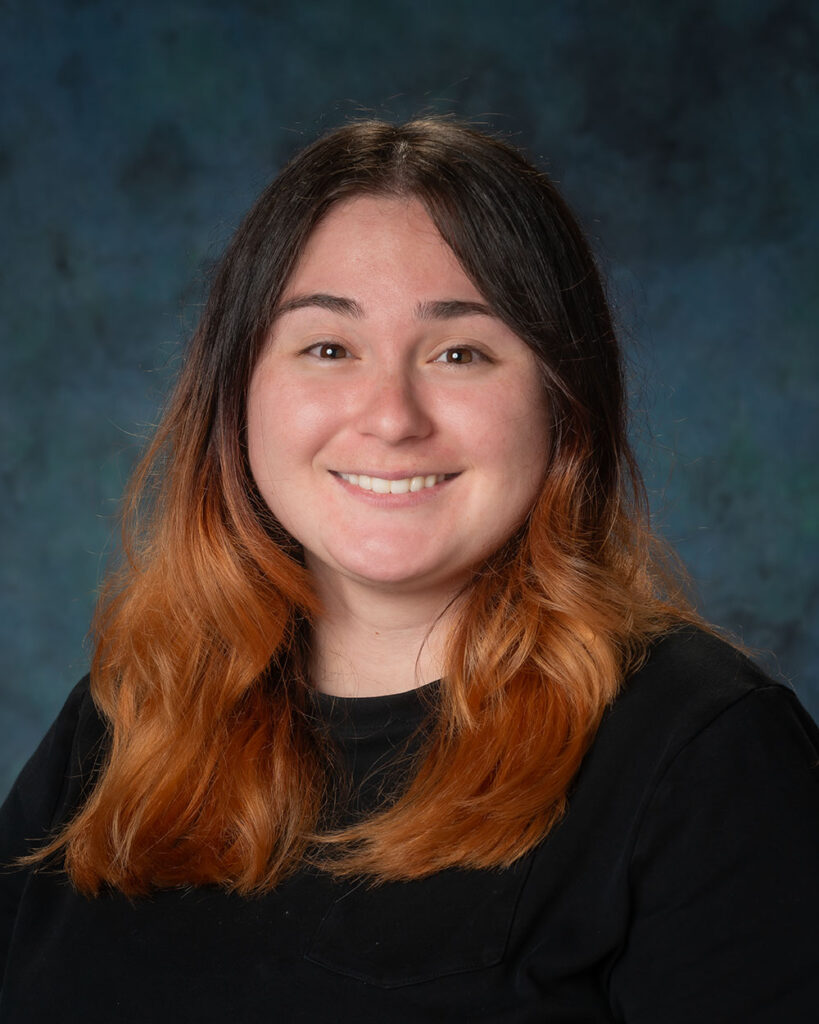
Petra Tafoya (Angus/Apparition) Petra has been acting in plays for a year now. You have seen her in ROMEO AND JULIET, as Head Guard in LIFE IS A DREAM, as Prince Charming in SNOW WHITE AND THE SEVEN DUDES, and as Captain Harville and Charles Hayter in BEYOND PERSUASION. She also house managed for THE ALCHEMIST.

Jim Laferriere (Doctor/Witch Team 6/Porter) Jim is jumping back into acting after a decade’s hiatus. This is his 2nd show in 2023, after performing in Clue with Village Stage Productions in Elk Grove. He previously studied theater in high school and college, with roles in A Midsummer Night’s Dream and West Side Story. His impossible dream is to write, direct, and/or perform in a movie that is one day labeled “classic” by film snobs like himself.
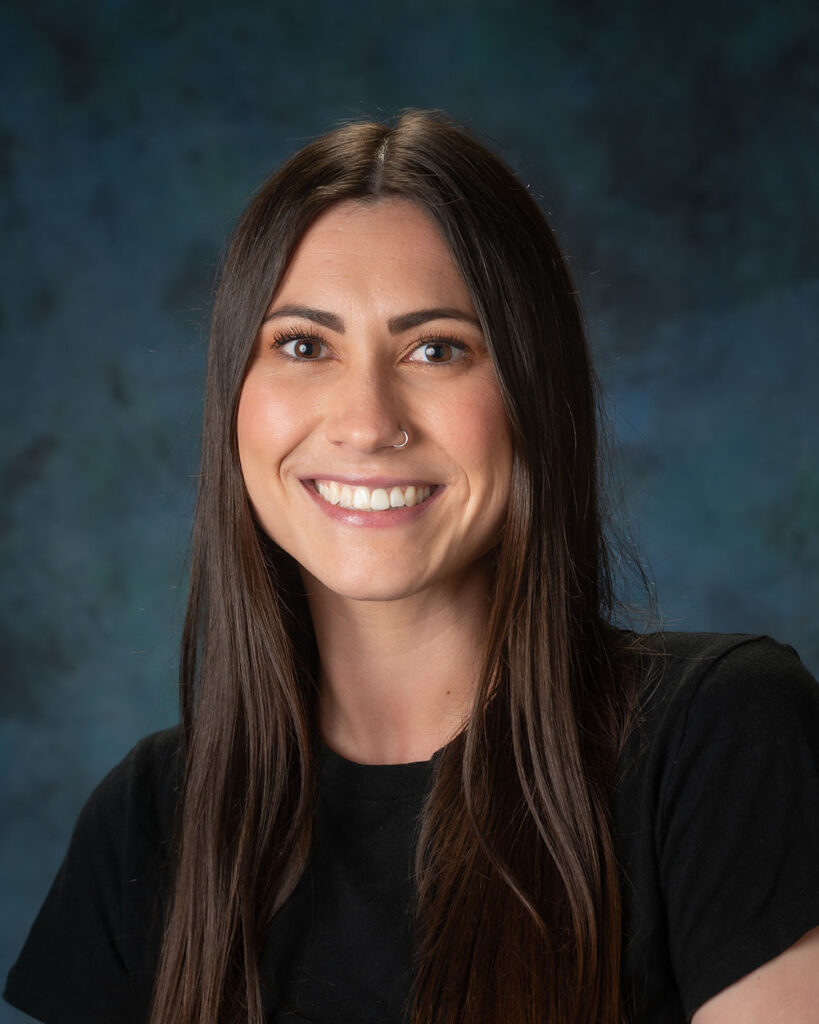
Shelby Saumier (Witch 3) Shelby Elizabeth Saumier is overjoyed to be returning to the Sacramento Shakespeare Festival. Previous acting credits include: Anne Elliot in BEYOND PERSUASION (City Theatre), title role in HENRY V (SSF), Florinda in THE ROVER (Big Idea Theatre), Narrator/Engineer/Ensemble in STORIES TO BE TOLD (CSUS), Elinor Dashwood in SENSE AND SENSIBILITY (City Theatre), Phantom in THE ROCKY HORROR SHOW (Green Valley Theatre), Jane Bennet in PRIDE AND PREJUDICE (City Theatre), Yvonne Chandel in A FLEA IN HER EAR (ARC), Claudio in MUCH ADO ABOUT NOTHING (Wildflower Ensemble), and Sandrine/Glory/Hope in ALMOST, MAINE (CSUS). Shelby proudly attended Sacramento State University, where she received her BA in theatre, her teaching credential, and her MA in teaching. Shelby would not be where she is today without the love and support of her friends, family, and life partner Reilly.
